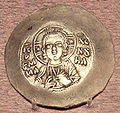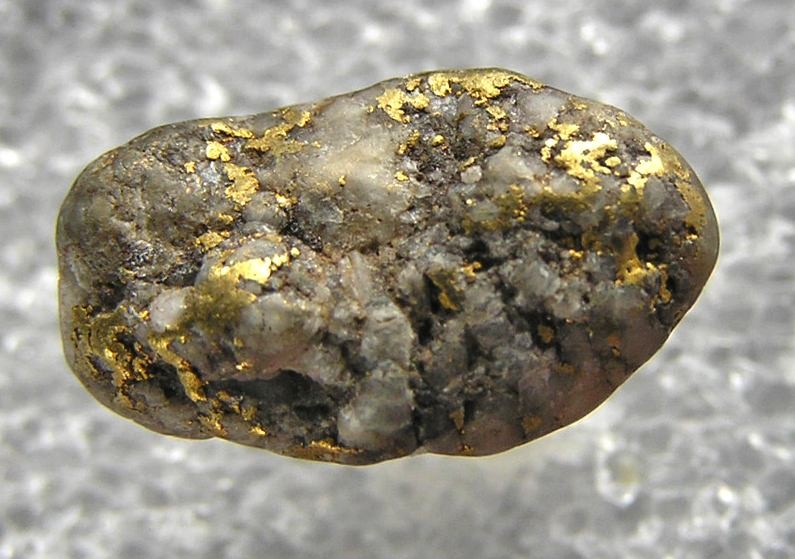The most common form of free gold that is found in placer deposits and some lode deposits is in the form of a naturally occurring alloy of gold and silver called electrum. In nature gold can also be alloyed with arsenic, bismuth, copper and platinum group metals (PGM). There were so many PGM's associated with Peruvian gold that many years later many of the antique coins from Peru were melted down for their platinum content.
 |
| An Electrum Coin from Constantinople |
Naturally occurring electrum is the alloy of gold and silver is called electrum that can range from a bright golden yellow through various shades of gold where the color of gold becomes lighter and lighter until it finally becomes silver. In the jewelry trade this is called White Gold although most of it is man-made.
Electrum was the type of natural gold that was mined by the ancient Egyptians to the east of the Nile River Red Sea . To the ancient Greeks it was known as gold or white gold that differentiated it from refined gold. The color of electrum can range anywhere from bright pale yellow to silver depending upon the amount of silver that is alloyed with the gold.
 |
| A nugget of electrum Photo by Rob Lavinsky |
A great deal of electrum is found in the ranges of Western Anatolia (Turkey
The use of electrum goes all the way back to the third millennium BC during the days of the old Kingdom of Egypt